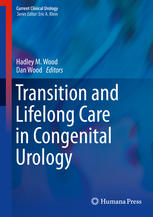

Most ebook files are in PDF format, so you can easily read them using various software such as Foxit Reader or directly on the Google Chrome browser.
Some ebook files are released by publishers in other formats such as .awz, .mobi, .epub, .fb2, etc. You may need to install specific software to read these formats on mobile/PC, such as Calibre.
Please read the tutorial at this link: https://ebookbell.com/faq
We offer FREE conversion to the popular formats you request; however, this may take some time. Therefore, right after payment, please email us, and we will try to provide the service as quickly as possible.
For some exceptional file formats or broken links (if any), please refrain from opening any disputes. Instead, email us first, and we will try to assist within a maximum of 6 hours.
EbookBell Team

0.0
0 reviewsTransitional Urology is designed to fill a critical gap that exists in the published literature by comprehensively addressing the urological challenges facing adolescents and adults with complex congenital anomalies of the genitourinary system. It provides a valuable resource to pediatricians and pediatric urologists facing urological management issues beyond their expertise in their aging patients as well as technical guidance to adult urologists who may have had little or no experience caring for patients with a congenital condition. This work will service as a field guide to congenitalism, providing a “how to” approach to guide the urologist using real clinical examples for the most common and challenging urological problems encountered. It also provides a framework for the transition process from pediatric to adult-centered care, with a special emphasis on the multidisciplinary nature needed to provide patient-centered care. Specific conditions that require special consideration, including myelomeningocele, exstrophy, posterior urethral valves, and hypospadias are highlighted. Topics considered common in the general urology practice- like infertility and sexual dysfunction are addressed within the context of patients with neurological or anatomical complexity. In addition, this text reviews urological complaints for which basic clinical algorithms are well-established within the context of a congenitally-abnormal bladder. Chapters discuss how and when special testing like video urodynamnics and positional fluoroscopy may be warranted to provide critical diagnostic guidance. The text also review how typical age-related urological phenomena, like elevated PSA, hypogonadism, and BPH, may present in this subset of patients and how treatment of these conditions may be different than the general population.